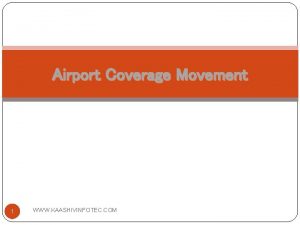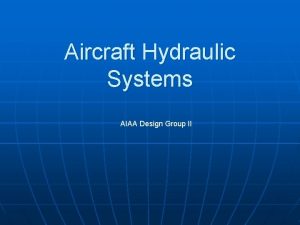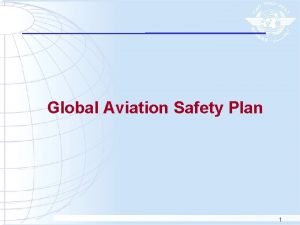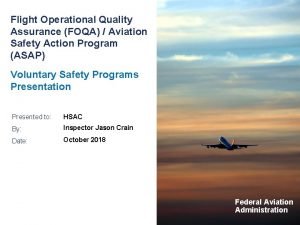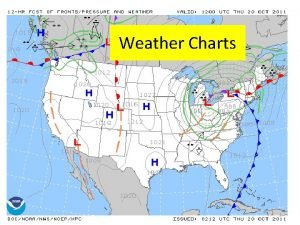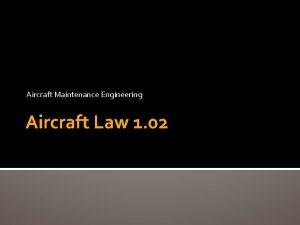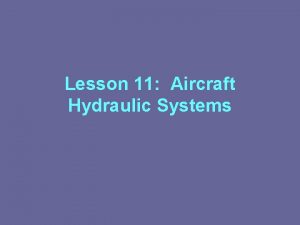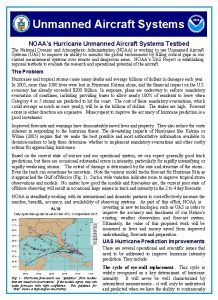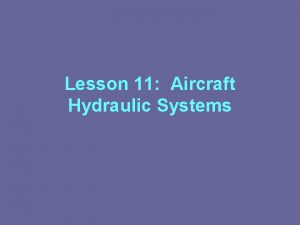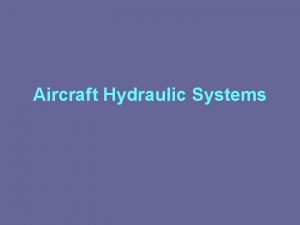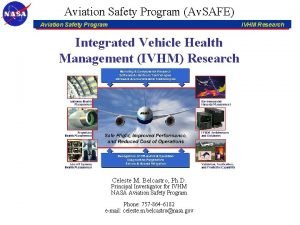Safety analysis of aircraft systems In aviation safety












- Slides: 12

Safety analysis of aircraft systems • In aviation, safety is defined as the absence of accidents and incidents. • JAR 25 treats systems as a whole. • Acceptable accident rates must be established, 100% safety can never be guaranteed. • A relationship must be established between severity of effect and probability of occurrence.

Probability versus severity of effect

The principle of graceful degradation • In any system the failure of a single element, component or connection should not prevent continued safe flight and landing. • This single failure should also not lead to an unacceptable workload for the operating crew.

Types of failure to be considered • • • Single active failure Passive and undetected (dormant) failures Combinations of independent failures Common-mode failures Cascade failures Failures produced by the environment

Errors • • • Design errors Manufacturing errors Maintenance errors Pilot mismanagement Errors in manuals or checklists

Dormant failure • Reverser is deployed! • Lauda Air B 767 , 26 -5 -1991 • Design errors in the thrust reverser electric systems led to unobserved deterioration of the HIV valve

Common-mode failure • Whatever you do, keep us away from the city!” • UA 232, 19 -6 -1989, Sioux City, Iowa. • No. 2 engine fan disc disintegration severed all 3 hydraulic lines in the tail area. • Exceptional flying by the crew led to a landing at Sioux airport

Cascade failure • THY 981, 3 -7 -1974, Paris • Inadequately closed lower deck door opened, causing floor collapse • This blocked the flying control runs under the floor, causing catastrophic failure

Failure rates in light single engined aircraft • Engine failure. A minimum demonstrated flying speed must be 61 kts or below, to enable a succesful off-airport landing. • Instrument systems for IFR operations must be dual and independent. Vacuum pump MTBF 700 hrs. • Prevention of flap asymmetry must be adequate

A few examples • Cessna 172. Seat rails, flap system, elevator control • Piper PA 28 wing attachment • Robinson R 22 helicopter, mast bumping

Current concerns for GA • • Inadequate training Inadequate currency Insufficient pilot ability Lack of familiarity with the full flight envelope • Inadequate understanding of increasingly complex systems

 Yelvington jet aviation jet fuel
Yelvington jet aviation jet fuel Flightlevel aviation aircraft maintenance
Flightlevel aviation aircraft maintenance Aircraft hydraulic systems
Aircraft hydraulic systems Aviation business systems
Aviation business systems Safety culture in aviation industry
Safety culture in aviation industry Hudson safety culture
Hudson safety culture Air transportation ppt
Air transportation ppt Nick sabatini & associates llc
Nick sabatini & associates llc Global aviation safety plan
Global aviation safety plan Civil aviation safety authority
Civil aviation safety authority What is foqa
What is foqa Commercial aviation safety team
Commercial aviation safety team Surface analysis chart explained
Surface analysis chart explained
